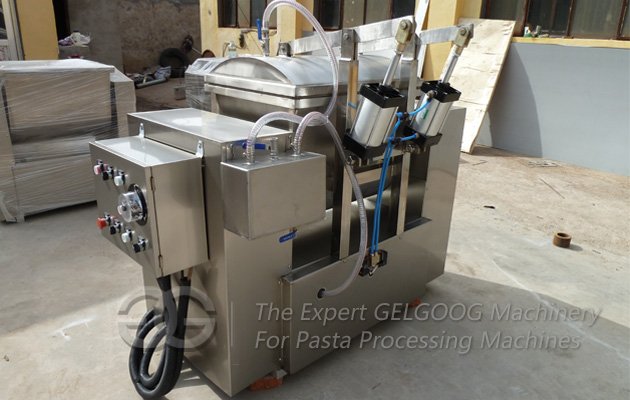News List
- Do You Know What is Prawn...
2018-07-10
- How To Correctly Operate ...
2018-03-14
- Are Instant Noodles Bad?...
2018-03-14
- Automatic Noodle Making M...
2018-01-23
- Whole Wheat Pita Bread Ma...
2018-01-12
- Automatic Pita Bread Mach...
2018-01-06
Product News
Product News

Technical Principle & Function of Vacuum Dough Mixing
2016-08-12
In the process of flour products (Noodles, dumpling, etc) production, dough mixer machine is the first line, which is also a important process directly related to the quality of flour products. The first step of dough mixing is to make the raw material of flour to absorb moisture, to facilitate the process after rolling forming; In addition, make the raw material flour fully absorb moisture. The quality of flour through moisture absorption across many products has a decisive role.

1. The process principle:
Vacuum dough mixing is in the condition of vacuum negative pressure, and wheat starch particles under negative pressure condition mix with water, because there is no air molecules, can more fully and quickly and evenly absorb water, thus promoting the transformation of the protein network structure of the dough fully, greatly improve the quality of flour products.
2. The process works:
1) Compared with ordinary and technology, can make the dough added water 10-20%.
2) Decrease free water in the dough, not easy to touch roller when rolling; Dough particles smaller, more even and smooth feeding.
3) Wheat flour particles suction uniform fully, gluten network structure formed in full, can make the dough color golden, compactness and
strength increased significantly, which made the noodles taste delicious, smooth, chewiness, don't mix soup (dissolution).
4) Low vacuum and double speed mixer adopts two stage, and high-speed liquid powder mixing, kneading dough at low speed, due to the short mixing time, and there is no air resistance, so not only reduce the power consumption, with remarkable effect of energy conservation and emissions reduction, and can reduce dough temperature about 5 ℃ to 10 ℃, avoiding the protein denaturation because of the high temperature of dough.








